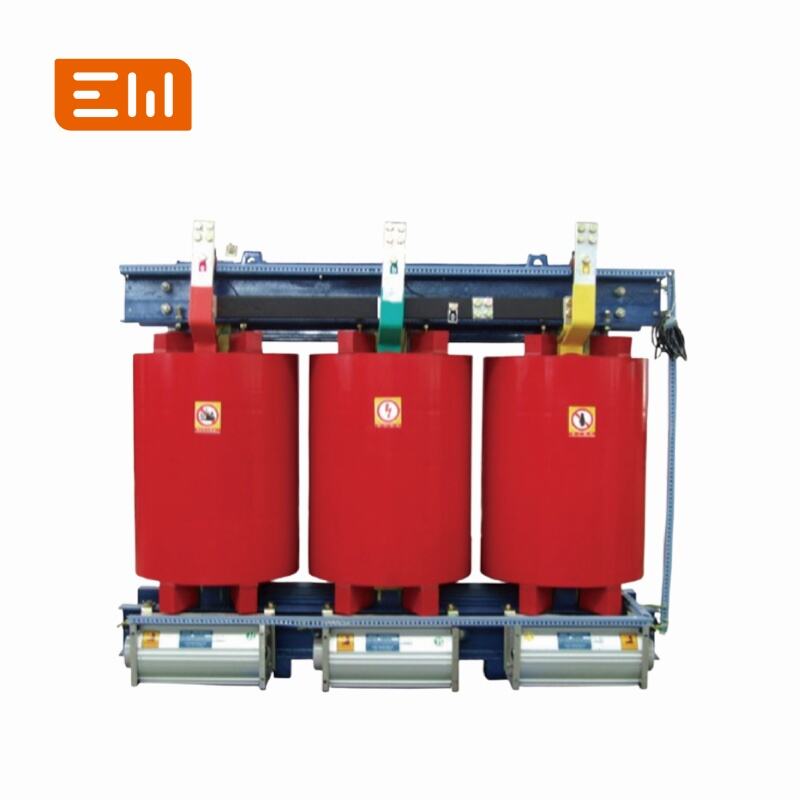What Do IP Protection Ratings Mean for Dry Type Transformers?
When selecting a dry type transformer, you will often see an "IP rating" listed in its technical specifications. This code, such as IP21 or IP23, is not just a technical detail—it is a crucial indicator of the transformer enclosure's level of protection against environmental factors. Understanding IP ratings is essential for choosing a transformer that is safe and durable for its intended location.
What is an IP Rating?
IP stands for Ingress Protection. It is a standard defined by the International Electrotechnical Commission (IEC) in standard 60529. The rating classifies the degree of protection an electrical enclosure provides against the intrusion of two things:
- Solid Objects: This includes everything from large body parts (like hands) and tools to minuscule particles like dust.
- Liquids: Primarily water, from dripping and splashing to powerful jets and full immersion.

Decoding the Two Digits
An IP rating consists of two numbers (e.g., IP23).
The First Digit: Protection Against Solids
This number ranges from 0 (no protection) to 6 (completely dust-tight).
- IP0x: No protection against contact or objects.
- IP1x: Protected against objects >50mm (e.g., accidental hand contact).
- IP2x: Protected against objects >12.5mm (e.g., fingers).
- IP3x: Protected against objects >2.5mm (e.g., tools, thick wires).
- IP4x: Protected against objects >1mm (e.g., most wires, screws).
- IP5x: Dust-protected. Ingress of dust is not entirely prevented, but it will not enter in sufficient quantity to interfere with operation.
- IP6x: Dust-tight. No ingress of dust.
The Second Digit: Protection Against Liquids
This number ranges from 0 (no protection) to 9 (high-pressure, high-temperature water jets).
- IPx0: No protection.
- IPx1: Protected against dripping water (vertically falling drops).
- IPx2: Protected against dripping water when tilted up to 15°.
- IPx3: Protected against spraying water (up to 60° from vertical).
- IPx4: Protected against splashing water from any direction.
- IPx5: Protected against water jets from any direction.
- IPx6: Protected against powerful water jets.
- IPx7: Protected against immersion in water up to 1m depth.
- IPx8: Protected against continuous immersion in water.
Common IP Ratings for Dry Type Transformers
While many combinations are possible, you will most frequently encounter the following for https://www.enweielectric.com/products/transformers/dry-type-transformers">dry type transformers:
-
IP00: This is an "open" transformer with no enclosure. It is meant for installation inside a larger, protective cabinet or switchgear assembly by an OEM. It offers no protection on its own.
-
IP21:
- 2 (Solids): Protects against finger-sized objects.
- 1 (Liquids): Protects against vertically dripping water.
- Use Case: Standard for clean, dry indoor locations like electrical rooms in commercial buildings.
-
IP23:
- 2 (Solids): Protects against finger-sized objects.
- 3 (Liquids): Protects against spraying water up to a 60° angle.
- Use Case: Suitable for protected outdoor locations or indoor areas where some spraying water might be present (e.g., some industrial settings). The enclosure design prevents rain from entering at a slight angle.
-
IP44:
- 4 (Solids): Protects against objects larger than 1mm.
- 4 (Liquids): Protects against splashing water from all directions.
- Use Case: A more robust rating for outdoor use or in industrial areas with a higher risk of dust and water spray.
How to Choose the Right IP Rating
The choice is simple: match the IP rating to the installation environment.
- Analyze the Location: Will the transformer be indoors in a clean room, in a dusty factory, or outdoors exposed to rain?
- Assess the Risks: Is there a risk of dripping water from pipes above? Will the area be hosed down for cleaning? Are there large particles of dust or debris present?
- Consult Codes and Standards: Local electrical codes may mandate minimum IP ratings for certain types of locations.
Choosing a rating that is too low will compromise safety and lead to premature failure. Choosing one that is excessively high adds unnecessary cost.
Conclusion: More Than Just a Box
The enclosure of a dry type transformer, and its corresponding IP rating, is a critical component that ensures its safety and longevity. It is the first line of defense against the operational environment. By understanding what the IP codes mean, you can confidently select a transformer that is perfectly suited and protected for its intended location.
If you are unsure which IP rating your project requires, the experts at https://www.enweielectric.com/contact-us">Enwei Electric can help you select the right enclosure to ensure a safe and reliable installation.

